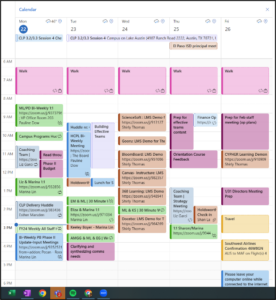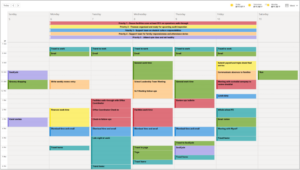The end-of-school-year thing is TOUGH!
There are many great articles floating around out there full of resources to help you thrive, not just survive, until the end. But perhaps you feel like there’s still something missing?
If so, I recommend my most recent read: Mindfulness for Teachers: Simple Skills for Peace and Productivity in the Classroom.
I was so intrigued by it that I felt no shame (well, maybe a little) when I completely stalked the author, Patricia (Tish) Jennings, a Professor of Education at UVA, until she let me interview her. She was also very kind to agree give away two copies of her book. Stay tuned to the end of this post for the giveaway!
In short, Tish’s book is about the practice of mindfulness for teachers. It is highly practical, rooted in real research, and full of wonderful personal anecdotes from her three-plus decades of classroom instruction and teacher supervision. As I read it, I was struck by how much her strategies could help improve teacher success and sanity – my two favorite things. Tish just GETS it.
Here are some excerpts from our conversation.
Maia: How did you become interested in mindfulness?
Tish: Before I became a teacher, I started meditating. I quickly realized that when I was meditating, I taught better, and that motivated me to continue practicing more. Some days other things happened in the morning that prevented my practice, and the contrast was really evident to me. I watched myself act in ways that weren’t helpful to students, such as being over reactive and misinterpreting behavior. My meditation practice helped me be more clearly tuned in to what was going on with my students and better understand their perspective.
Maia: Why is teaching so freaking stressful anyway?
Tish: Everyone in the room is a psychological captive. You cannot leave. That adds a level of pressure to the experience. Emotional turmoil is amplified, and for teachers this is particularly hard because we are supposed to remain calm and composed. In most adult jobs, when we get frustrated, we can take a break. But in teaching, you cannot. You have to deal with it then and there, in a professional way, without embarrassing yourself and while maintaining the respect of your students.
Maia: One of my strongest memories of teaching was the moment I figured out that HOW I said certain things to particular students could make or break their day. How does practicing mindfulness play out when working with students who have regular, or even occasional, behavior issues?
Tish: In a current study we are running in the Bronx, we are finding that the more teachers understand their own emotions, why they have them, and what triggers them, the more helpful they can be to their students. For example, let’s say a student was behaving in a way that seemed inappropriate to you and you reacted with a brief look of annoyance. A student who is living in a home where she is exposed to violence and aggression may tend to be hyper-vigilant about her environment and constantly scanning for threats. So, she may react to your look in ways that seem strange to you, whether that’s by falling down screaming, becoming disrespectful or checking out. From where you sit, you may not even realize you gave the student a particular look. But from her perspective, she felt threatened by your look. If we are mindful, we can provide emotional support rather than reacting. We can be in a better place to provide positive engagement. We are less likely to blame the child, and we can respond from a place of compassion. This makes the job more enjoyable.
Maia: What are your top three tips for a teacher looking to increase mindfulness right away?
Tish: Here are my favorites. . .
- The three breaths exercise. The hard part is noticing when you need to take deep breaths, but when you notice stress or strong emotion beginning to arise, take three slow deep breaths. This literally changes the nervous system, slows everything down, and turns off the emotional reactivity. When you calm down, it helps you see what’s happening more clearly; you will stop assigning intent to your students and won’t take things as personally.
- Walk mindfully. Teachers spend a lot of time on their feet. Put your awareness in your feet; as you walk around, notice the weight of your body on the floor.
- Savor as many positive emotions as you can. Whether pausing to really feel deeply when you support an academic breakthrough, or congratulating yourself for helping a student turn his day around, stop and savor the emotion, like you might savor a delicious piece of chocolate.
Want a copy of this awesome book?
Best of all, Tish and Norton (her publishing company) are happy to give away two copies! To enter: Please leave a comment on this post below sharing how you believe mindfulness will help you or your students. Don’t forget to include your first name, last initial and email address when commenting so I can contact the lucky winners. Enter by Friday, June 12!
Contest fine print:
- Entries must be received by Friday, June 12, at midnight EST to be considered.
- If a winner does not respond within 48 hours of receipt of a notification email from me, a new winner will be chosen.
PS I think you all know this, but I never post about anything sponsored. I just find stuff I like and write about it. And I really did stalk Tish while she was grading finals.
*************
The contest has ended. Lauren D. (#8) and Mary D. (#28) are our winners! Thanks to everyone for sharing!


